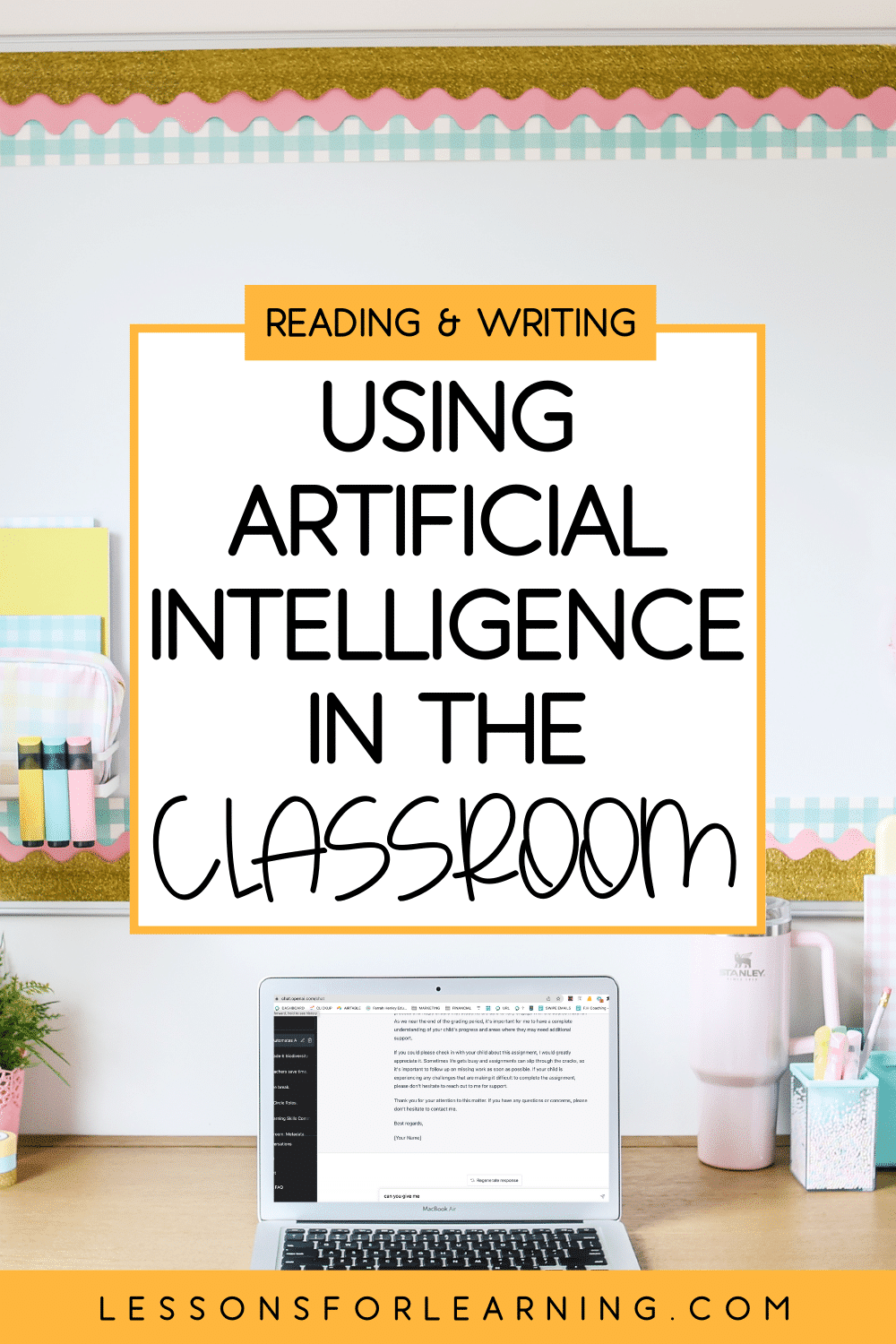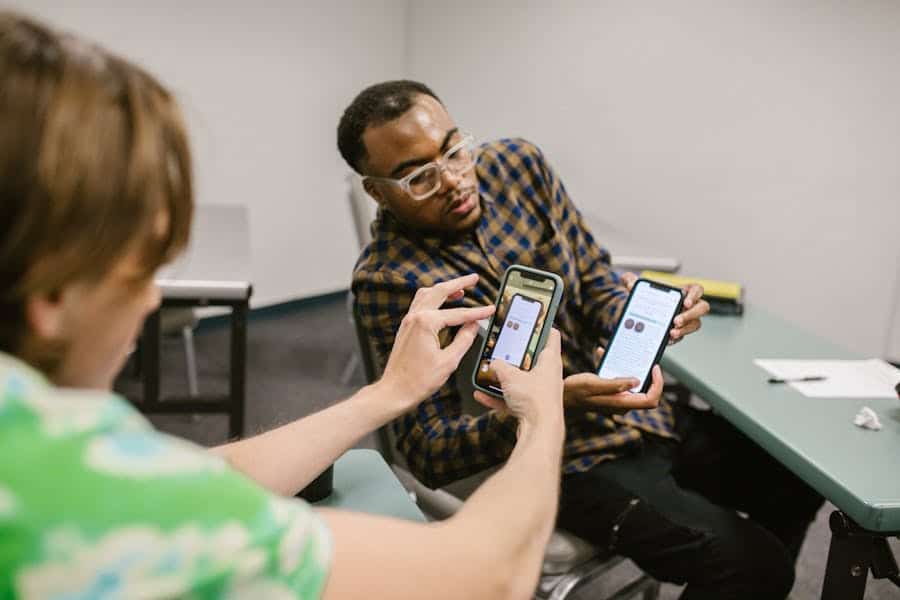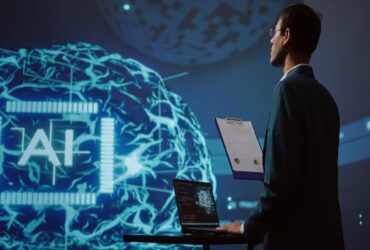To use AI in the classroom effectively, obtain consent before using students’ data and teach empathy towards privacy concerns. Implement AI tools for engaging writing prompts and discussion questions in English language arts classes.
Consider using AI for creating educational content, such as Canva AI-Powered Tools and EdPuzzle’s Teacher Assist, to enhance the learning experience. Encourage students to compare exam questions generated by AI and humans to assess learning effectively. Embrace the role of artificial intelligence in education by leveraging AI writers for research purposes and text production on various topics.
By responsibly integrating AI into the educational environment, educators can enhance student engagement and facilitate deeper learning experiences.
The Rise Of AI In Education
Embracing AI in the classroom can revolutionize education by providing personalized learning experiences, automating administrative tasks, and offering innovative teaching tools. Educators can use AI to analyze student data, create interactive lessons, and provide real-time feedback to enhance the learning process.
With AI, the classroom becomes a dynamic and adaptive environment that prepares students for the future.
From Traditional To Tech-enhanced Learning
Traditional learning methods have been replaced with tech-enhanced learning techniques, including AI. AI is changing the way students learn and teachers teach. With AI, teachers can create personalized lesson plans and assessments based on each student’s learning style and pace. AI can also provide instant feedback to students, helping them improve their performance. This shift towards tech-enhanced learning has made education more engaging and interactive.
The Role AI Plays In Modern Classrooms
AI has become an essential tool in modern classrooms. It can assist teachers in various tasks such as grading, lesson planning, and monitoring student progress. AI-powered educational software can also provide students with interactive learning experiences that are tailored to their needs. AI can help identify areas where students are struggling and provide targeted interventions to help them improve.
AI can also help bridge the gap between students with different learning abilities. For example, students with visual or hearing impairments can benefit from AI-powered software that provides them with audio or visual feedback. Additionally, AI can help teachers identify areas where students need more attention and provide them with additional resources to help them succeed.
In conclusion, AI is revolutionizing the way we teach and learn. It has the potential to make education more accessible, engaging, and personalized. As educators, it is essential to embrace this technology responsibly and use it to enhance the learning experience for all students.

Credit: lessonsforlearning.com
Selecting The Right AI Tools
When it comes to integrating AI into the classroom, selecting the right AI tools is crucial for enhancing the learning experience. Educators need to carefully consider various criteria to ensure that the chosen AI applications align with the educational objectives and provide valuable support to both teachers and students.
Criteria For Choosing AI Applications
1. User-Friendly Interface: The AI tool should have an intuitive interface that is easy for both educators and students to navigate and utilize effectively.
2. Educational Relevance: The AI application must align with the curriculum and educational goals, offering content that enhances the learning process.
3. Customization Options: The ability to customize the AI tool to cater to specific learning needs and styles is essential for personalized learning experiences.
4. Data Privacy and Security: Ensuring that the AI tool complies with data privacy regulations and provides a secure environment for student interaction and data storage is paramount.
Popular AI Tools For Educators
1. ChatGPT: A versatile AI tool that can generate engaging writing prompts and discussion questions tailored to different literary genres and themes, stimulating students’ creativity and critical thinking.
2. EdPuzzle’s Teacher Assist: This AI-powered tool supports educators in creating interactive and personalized learning experiences by offering features such as automated feedback and content customization.
3. Canva AI-Powered Tools: Canva’s AI capabilities enable educators to create visually appealing educational materials, presentations, and infographics to enhance the delivery of learning content.
4. Whimsical – Outline Creation Tool: An AI tool that assists educators in creating organized and visually engaging outlines for lesson plans and educational resources.
5. Exam Question Comparison AI: This tool allows students to compare and analyze multiple-choice exam questions written by both human students and AI, promoting critical thinking and evaluation skills.
Integrating AI Into Lesson Plans
Integrating AI into lesson plans can greatly enhance the learning experience in the classroom. Teachers can use AI tools to personalize instruction, provide real-time feedback, and create more engaging and interactive lessons. With responsible use and proper implementation, AI has the potential to revolutionize education.
Seamless Integration Strategies
Integrating AI into lesson plans can be a transformative experience for both educators and students. To seamlessly integrate AI into the classroom, educators can start by identifying specific learning objectives and areas where AI can enhance the learning experience. By incorporating AI-driven tools and resources into lesson plans, teachers can create a more dynamic and personalized learning environment that caters to the unique needs of each student.
Furthermore, educators can collaborate with AI experts to develop custom solutions that align with the curriculum and teaching methods. This collaborative approach ensures that AI integration is purposeful and supports the overall learning goals, making it an integral part of the educational journey.
Case Studies: Ai In Action
Case studies provide valuable insights into the real-world application of AI in the classroom. By examining successful implementations of AI technologies, educators can gain a deeper understanding of how AI can positively impact teaching and learning outcomes. These case studies serve as practical examples that showcase the effectiveness of AI tools in various educational settings, inspiring educators to explore new possibilities for integrating AI into their own lesson plans.
Ai For Personalized Learning
Artificial Intelligence (AI) is revolutionizing education by enabling personalized learning experiences for students. By leveraging AI, educators can tailor instruction to meet the unique needs and preferences of each learner, fostering a more effective and engaging educational environment.
Adaptive Learning Platforms
Adaptive learning platforms powered by AI offer a dynamic approach to education, catering to individual student’s pace and style of learning. These platforms utilize machine learning algorithms to analyze students’ performance and adapt the curriculum accordingly, providing targeted content and resources to address specific learning gaps.
Tools like Knowt’s AP score calculator complement these platforms by helping students estimate their exam outcomes and set realistic goals based on their progress.”
Customized Student Feedback
AI facilitates personalized feedback mechanisms, allowing educators to provide tailored assessments and constructive criticism to students. By employing natural language processing, AI tools can analyze students’ work and offer detailed insights, enabling teachers to offer customized feedback that addresses each student’s unique strengths and areas for improvement.
Creative Applications Of Ai
Artificial Intelligence (AI) offers a myriad of creative applications that can transform the learning experience in the classroom. By leveraging AI as a creative partner and integrating it into project-based learning, educators can foster innovation, critical thinking, and problem-solving skills among students. Let’s explore some exciting ways to harness the power of AI for creative learning.
Ai As A Creative Partner
AI serves as a valuable creative partner in the classroom, enabling students to explore new frontiers of expression and innovation. Through AI-powered tools, students can engage in activities such as:
- Generating unique artwork and designs using AI-driven graphic design platforms
- Collaborating with AI to compose music, create digital art, and experiment with multimedia projects
- Exploring AI-generated storytelling and narrative generation to inspire imaginative writing exercises
Project-based Learning With Ai
Integrating AI into project-based learning initiatives opens up exciting opportunities for students to engage in real-world problem-solving and creativity. Teachers can incorporate AI in project-based learning by:
- Challenging students to develop AI-driven solutions for community issues and global challenges
- Utilizing AI for data analysis and visualization in science, mathematics, and social studies projects
- Encouraging students to explore AI-generated simulations and models to understand complex concepts
Ethical Considerations And Privacy
As AI becomes more prevalent in classrooms, it’s crucial to address the ethical considerations and privacy concerns surrounding its use. Educators must navigate the potential implications of utilizing AI tools while ensuring the protection of students’ privacy and promoting ethical use among students.
Data Security In AI Tools
When integrating AI tools into the classroom, prioritizing data security is paramount. Educators should thoroughly assess the data security measures implemented by AI tools to safeguard students’ personal information. It’s essential to select AI tools that adhere to stringent data protection protocols, ensuring the confidentiality and integrity of student data.
Promoting Ethical Use Among Students
Empowering students with ethical awareness regarding AI usage is pivotal. Incorporating discussions on the ethical implications of AI, such as respecting privacy and consent, can cultivate a responsible mindset among students. Educators should emphasize the importance of obtaining consent before using individuals’ data in AI-related activities, fostering a culture of ethical AI utilization within the classroom.
Frequently Asked Questions
How To Responsibly Use AI In School?
To responsibly use AI in school, always obtain permission before using someone’s image with AI. Foster empathy by discussing potential feelings if students’ information is shared without consent.
How To Use AI In The Ela Classroom?
To use AI in the ELA classroom, incorporate tools for writing, question generation, grading, test prep, and images. Encourage empathy and seek approval before using AI on student work. Utilize AI for creative prompts and discussion questions to enhance student engagement and critical thinking.
What Is The Role Of Artificial Intelligence In The Classroom?
Artificial intelligence enhances learning through personalized instruction, automated grading, and data analysis for tailored teaching approaches.
What Ai Do Teachers Use?
Teachers use AI tools such as ChatGPT, Canva AI-Powered Tools, and EdPuzzle’s Teacher Assist for educational content creation.
How Can AI Enhance Classroom Learning?
AI can personalize learning, provide instant feedback, and assist with grading, benefiting students and teachers.
Conclusion
Incorporating AI in the classroom can enhance learning experiences and foster creativity among students. By responsibly using AI tools, educators can encourage empathy and critical thinking skills. Utilizing AI for tasks like generating writing prompts or facilitating discussions can revolutionize the educational landscape.
Embracing AI in education opens up a world of possibilities for both teachers and students alike.












































Leave a Reply